Environmental issues—you know, like land use and climate change—should be an easy sell to listeners. After all, they’re big massive things that impact our world, right? Not so fast. Though so many people claim to be concerned about these issues, they don’t always want to dive in on a big listen. Environmental issues can be depressing. And while many potential listeners may, in theory, be concerned about these issues, they don’t see the impact on their everyday life. They already know things are bad.
“I’ve known about the sage-grouse for a long time and had frankly kind of avoided covering it because it felt like one of those obscure environmental stories that it’s really hard to make people care about.”—Ahearn
Part of the problem is that many journalists tend to cover the issues from urban media hubs like New York City or Los Angeles. But the stories themselves? They’re often more about rural areas of the country. And the issues are often so complex that just parachuting in makes it tough to get a true picture of what’s going on.
That doesn’t mean podcasters shouldn’t take on environmental issues. You just need to find a way into them, whether that means making the piece or series more personal and character-driven or letting listeners spend time in the places where those stories take place. What brings it all together? Storytelling. Immersive storytelling.
Audio journalist Ashley Ahearn had been covering environmental issues for NPR for seven years when she realized that she needed to live the way of life she reported on.
“Covering land conservation environmental science from Seattle for seven years, the urban concrete liberal jungle, I had a real sense that I wasn’t getting the whole story and furthermore…parachuting in doing a story sucks,” says Ahearn.
She adds: “I wanted to feel a little bit closer to, frankly, the other side of the story and the other side of the country when we talk about conservation issues.”
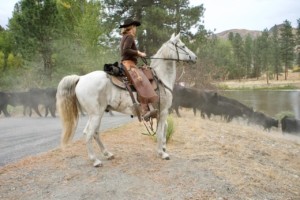
So she took that idea to its extreme and moved to “one of the reddest counties in Washington state.” Ahearn’s new home county “is very very conservative” and still has a strong ranching community.
There she found “folks who are actually living closer to the land and answering those questions every day about land use as opposed to in theory, the way I think many people in cities do.”
And, over time, Ahearn also found a way into a land use and conservation story by focusing on a bird many people will never see: the greater sage-grouse. That is, unless they live in an area where the bird lives. Then? Oh, do they ever know about it. Ahearn’s widely lauded podcast series Grouse is “a show about the most controversial bird in the West and what it can teach us about hope, compromise and life in rural America.” The eight-part series was produced in partnership with BirdNote Presents, and distributed by NPR in collaboration with Boise State Public Radio.
The idea for the podcast—“about a bird, but also about the urban-rural divide in this country”—started taking form in Ahearn’s mind about a year after she moved to her new town. Ahearn plays the role of stand-in for the listener, “a stranger in a strange land moving to sagebrush country as a way to try to understand it better myself.”
Ahearn’s move stuck, and not just because it’s paying off on the work front. Now she owns horses. She helps neighbors move cattle. She knows how to use a chainsaw. And though she was still learning the how-tos of all that while producing Grouse, it fed into something she had avoided in the past: becoming a character in her own show.
That decision “came after hours of conversations” with Ahearn’s editor, Whitney Henry-Lester.
Though being in the story was a serious no-no while at NPR—“you had that beaten out of you,” says Ahearn, “like ‘you are not the story, it’s not about you’”—Henry-Lester felt that the sage-grouse wasn’t enough of a compelling character, that the series needed somebody else to hook listeners—and that hook was Ahearn.
“I mean, there’s all sorts of big pieces and a lot of reporting that’s been done on [the bird] but I think for a lot of people they’re never going to see this bird,” Ahearn says. “[Also, if they] don’t live in sagebrush country, they don’t really even see the beauty or necessarily the value of these vast stretches of millions of acres in the West. So, yeah, this podcast was sort of a creative challenge to myself in a way because I’ve known about the sage-grouse for a long time and had frankly kind of avoided covering it because it felt like one of those obscure environmental stories that it’s really hard to make people care about.”
At times, Ahearn says it was uncomfortable being a character in the show: “It felt a little bit like a balancing act, between just hanging out with my new cowboy friends and, like, recording them. It wasn’t easy.”
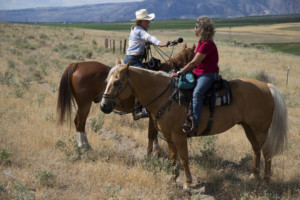
An audiophile who has been “obsessed with sound” from early on, Ahearn records constantly. So she didn’t even realize that some of what she was recording during the early months after the move would be used for a show. But that tape really helps set the scene and sends the listener on a sonic journey leading into the story of the sage-grouse.
Ahearn adds that she was always up front about what she did for a living so those new friends were aware that she was recording.
But being a character in the show also opened Ahearn herself to more judgment from listeners. The series opens with the new-to-the-area resident and radio reporter killing a rattlesnake on her deck. From the get-go, the rattlesnake incident was a dividing line. “There are a lot of people who turned [Grouse] off and decided I was gleefully killing an innocent animal and didn’t want to hear any more from me,” she says. “There’s always that risk when you open up about yourself and your experience. Certain people are not going to pick up what you’re putting down.”
But, she adds, “I use that purposely to show how out of place I was…and just how ill-equipped I was for this new life.”
The rattlesnake, and the rest of Ahearn’s role as a character in her own podcast, was “in service of helping others feel the emotional weight of this story as opposed to just the informational weight of it.”
Out in the world
Another podcast that goes deep on environmental issues is Outside/In. Produced by a team of three at New Hampshire Public Radio, the show focuses on “the natural world and how we use it.” It launched in 2015.
Unlike Grouse, Outside/In’s twice-monthly episodes each tackle a different topic, though they all swirl around the intersection of humans and the natural world. Recent shows focused on climate migration and the question of where climate-worried people should live; the (rather awful) practice of fortress conservation; and how planting a tree can be a tool of erasure.
“I often say we think of ourselves kind of like anthropologists of the environmental movement,” says the show’s host, Sam Evans-Brown. That focus has the team looking at the movement “in all its complexities, as opposed to just seeing [it] as a block, which it definitely, definitely is not.”
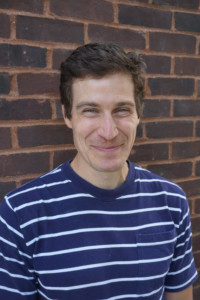
One thing the show doesn’t do is any “both sides-ism type reporting,” says Evans-Brown. In other words: There’s no debate about whether climate change is real. Instead, the show points its mics toward people who disagree about what to do about the problems.
“What we’re trying to do,” adds, “is take really complex things and just figure out a way to make them sink into your brain.”Evans-Brown
Some topics are more obviously straight-out “well, X is a big issue,” says Evans-Brown. “Then you look for characters and narratives and a way to tell a story.” Other times, a great character pops up and then they figure out how to build a show around that person. While the team originally thought they would have more of the second kind of storytelling, things didn’t go that way.
“It’s actually pretty hard in the environmental sphere,” says Evans-Brown. During the show’s early piloting process, focus groups didn’t get all jazzed up unless it was a really good character. Nothing against scientists, but they’re not always known for being great storytellers. “That’s why a lot of our episodes have relied more on narration,” he says.
“What we’re trying to do is take really complex things and just figure out a way to make them sink into your brain.”—Evans-Brown
That includes giving listeners the time to, well, really listen to the sounds of the place they’re learning about. Evans-Brown started at NHPR as a news reporter. Back then, field reporting for sounds usually meant standing in a spot to get 30 seconds of room tone or whatever other background noise he needed, and going on his way. For the kinds of stories he and the rest of the producers work on for Outside/In, they start the tape from the outset and just keep it rolling.
“If we find ourselves in a compelling sonic environment, we stop moving, and we stay there for, like, three, four minutes trying to just get everything in that spot,” he says. “Generally speaking, there’s never enough.”
As for what equipment Evans-Brown takes into the field, he says that 90 percent of the time he uses a shotgun mic but he also brings an omni microphone. And for recording interviews in the field, he prefers using a wireless lavalier.
“You wire up your subject..then I can use my shotgun or my omni to be gathering, like, the sound of our footsteps. But the thing that I really like about it is if [you’re] doing an interview in the natural environment, you’re often out there for, like, a couple hours. And [the source will] forget that they’re wearing [the mic], which is really just like magic.”
Part of the solution?
“People always ask me, ‘Well, do you think you’re changing hearts and minds?’ And I’m just like ‘Fuck no, absolutely not.’”—Ahearn
So, should podcasters attempt to fix the world through their environmental coverage? Should they seek solutions instead of just reporting on the problems? Depends on what kind of a reporter you’re trying to be. Ahearn is far more of a traditional journalist on that front. She doesn’t come from the solutions journalism school of reporting. She didn’t make Grouse in order to fix things. And she doesn’t think she’s necessarily going to change minds with the podcast. But she does believe it can start conversations. “I do see storytelling like this as a way to just open lines of communication,” she says. “People always ask me, ‘Well, do you think you’re changing hearts and minds?’ And I’m just like ‘Fuck no, absolutely not.’ I think I’m creating a little more empathy and maybe presenting some new ideas but I think we’re lying to ourselves if we think that [we’re fixing things] in this country right now.”
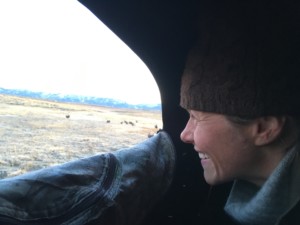
Anchorage, AK-based freelance writer Jenna Schnuer has written for publications including the New York Times and National Geographic. She is currently developing Here in Alaska, an independent podcast covering stories out of her adopted home state.



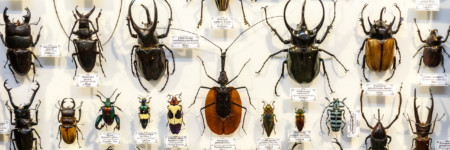
Comments